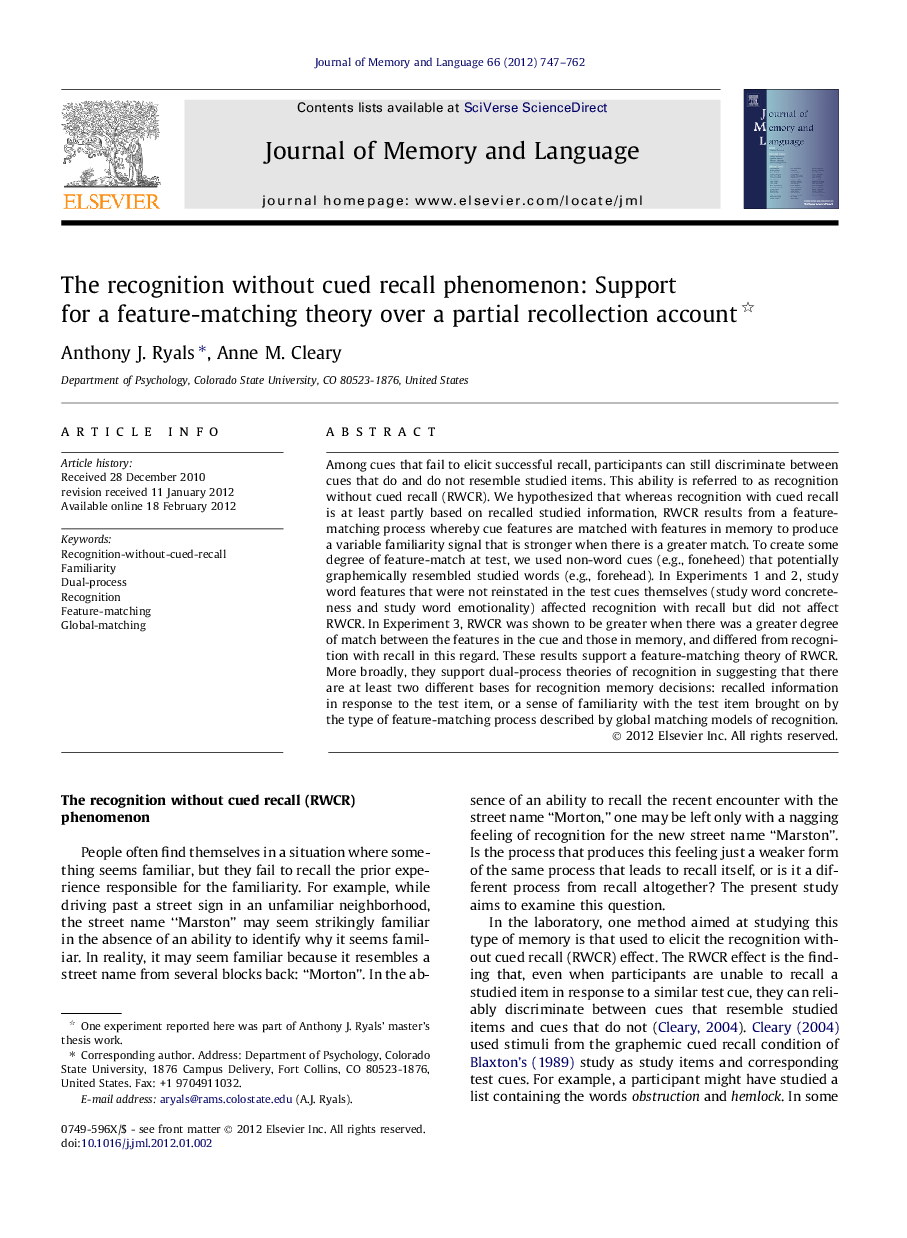| کد مقاله | کد نشریه | سال انتشار | مقاله انگلیسی | نسخه تمام متن |
|---|---|---|---|---|
| 931945 | 923051 | 2012 | 16 صفحه PDF | دانلود رایگان |

Among cues that fail to elicit successful recall, participants can still discriminate between cues that do and do not resemble studied items. This ability is referred to as recognition without cued recall (RWCR). We hypothesized that whereas recognition with cued recall is at least partly based on recalled studied information, RWCR results from a feature-matching process whereby cue features are matched with features in memory to produce a variable familiarity signal that is stronger when there is a greater match. To create some degree of feature-match at test, we used non-word cues (e.g., foneheed) that potentially graphemically resembled studied words (e.g., forehead). In Experiments 1 and 2, study word features that were not reinstated in the test cues themselves (study word concreteness and study word emotionality) affected recognition with recall but did not affect RWCR. In Experiment 3, RWCR was shown to be greater when there was a greater degree of match between the features in the cue and those in memory, and differed from recognition with recall in this regard. These results support a feature-matching theory of RWCR. More broadly, they support dual-process theories of recognition in suggesting that there are at least two different bases for recognition memory decisions: recalled information in response to the test item, or a sense of familiarity with the test item brought on by the type of feature-matching process described by global matching models of recognition.
► Concreteness and emotion affects recognition with versus without recall differently.
► Recognition without recall depends on degree of match between cue features and memory.
► Recognition with cued recall is best explained by a generate–recognize theory.
► Recognition without cued recall is best explained by a feature-matching theory.
Journal: Journal of Memory and Language - Volume 66, Issue 4, May 2012, Pages 747–762